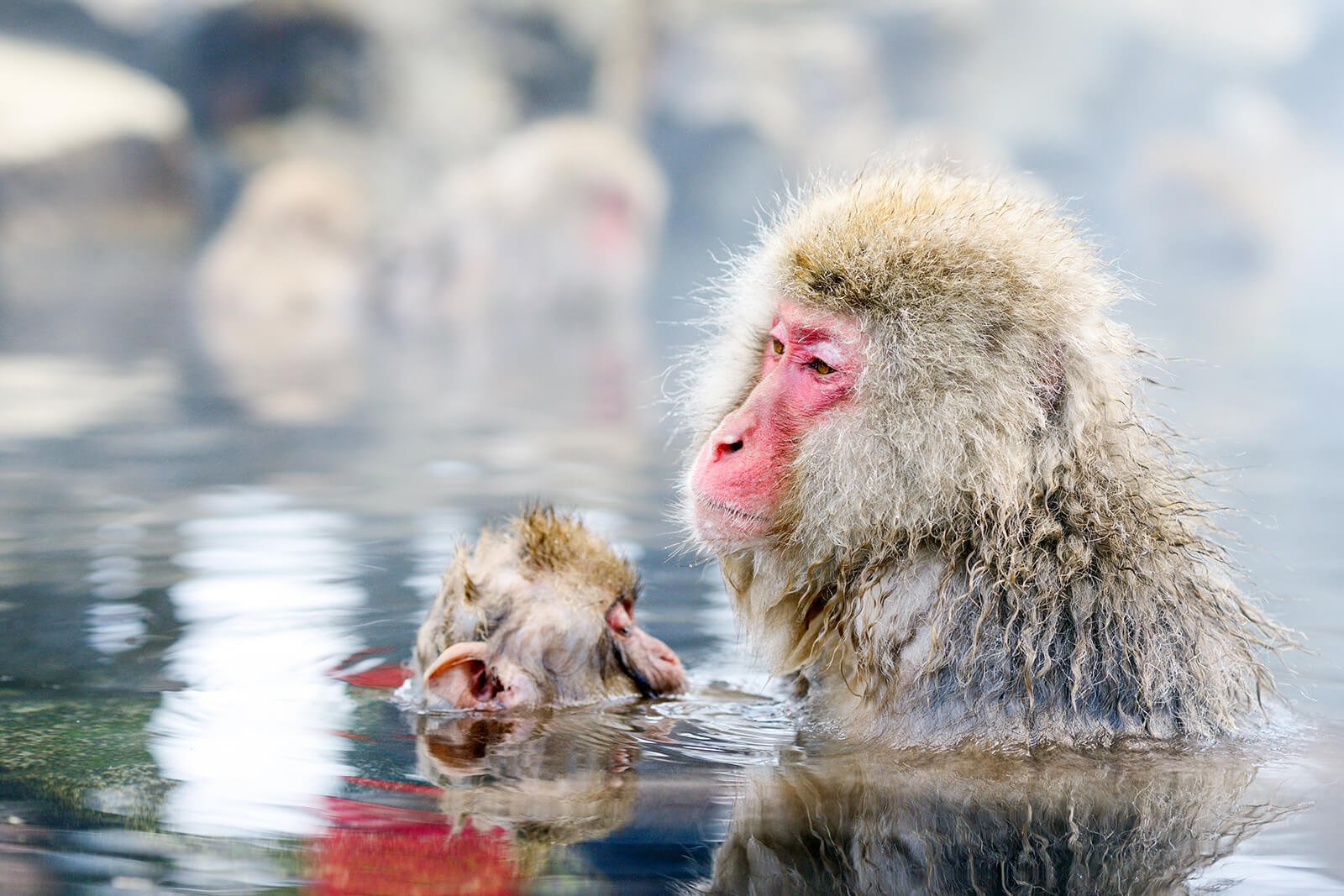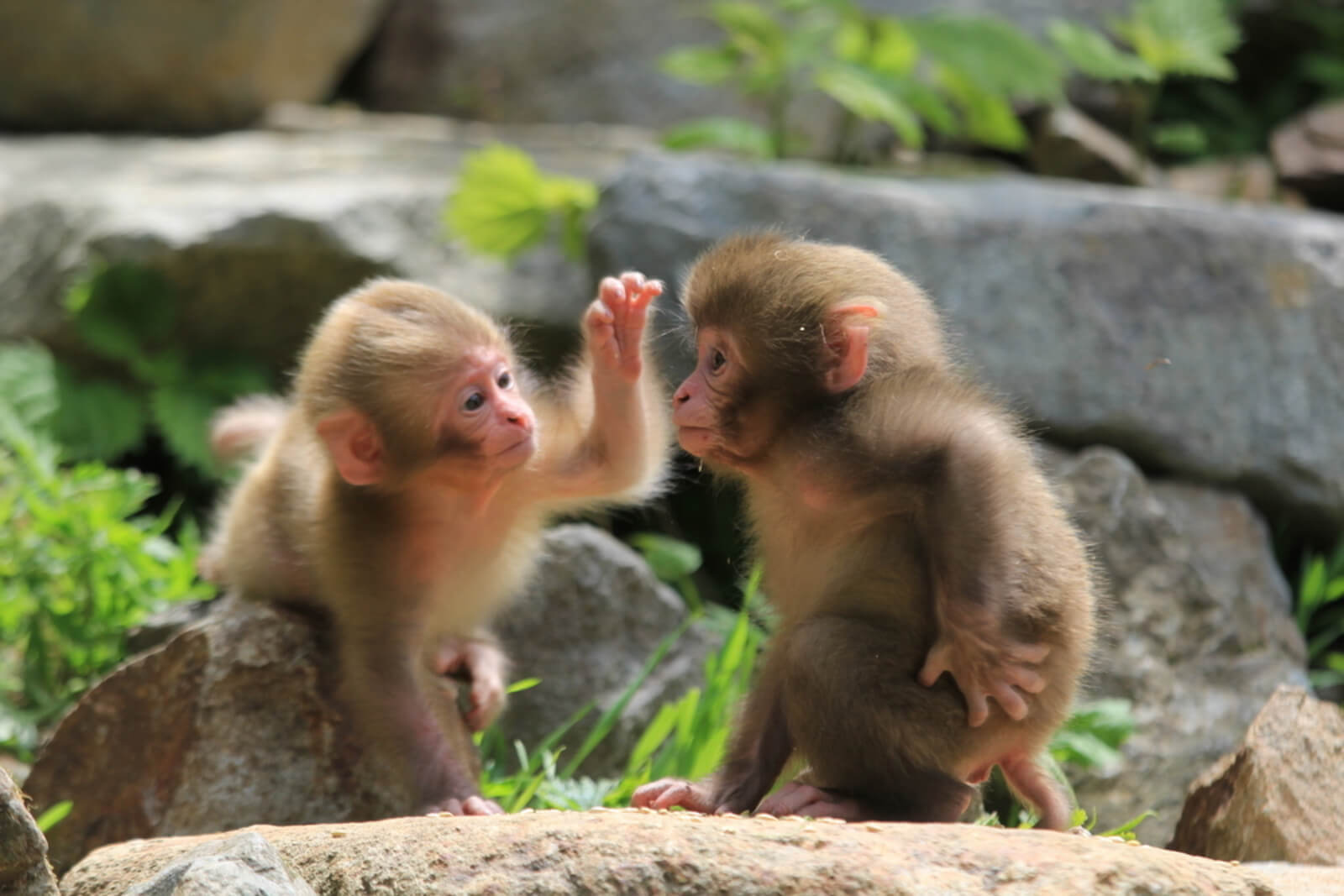The Jigokudani Wild Snow Monkey Park [Guide]
The only place in the world where you can see wild monkeys soaking in hot spring baths
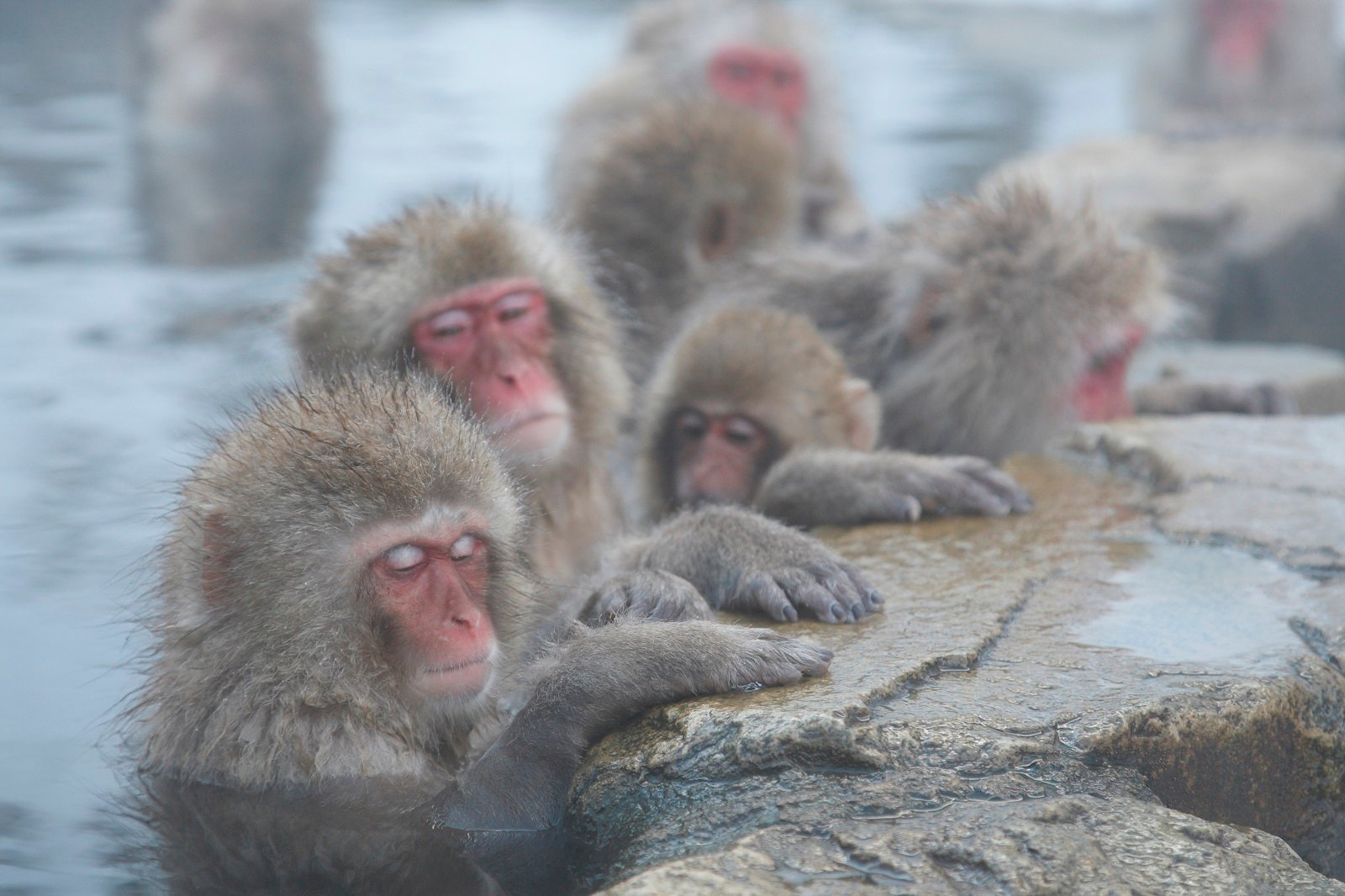
The serene faces of snow-covered monkeys soaking in a hot spring bath have become an international sensation. First introduced to the world by US magazine “Life,” the monkeys achieved stardom, later becoming unofficial mascots of the 1998 Nagano Winter Olympics and starring in nature documentaries produced by the BBC. The bubbling hot springs and rugged terrain of Jigokudani create a fascinating backdrop to this natural wonder: the only place in the world where you can see wild monkeys soaking in hot spring baths.
The Japanese Macaques, affectionately called snow monkeys, go about their daily routines without a care for the paparazzi around them. Youngsters splash around the hot spring while mothers tend to their babies and the alpha male watches over the troupe. Their fascinating social structure can be observed up close, not from behind a fence but from right in their midst.
Jigokudani Wild Snow Monkey Park Travel Guide
About the Park
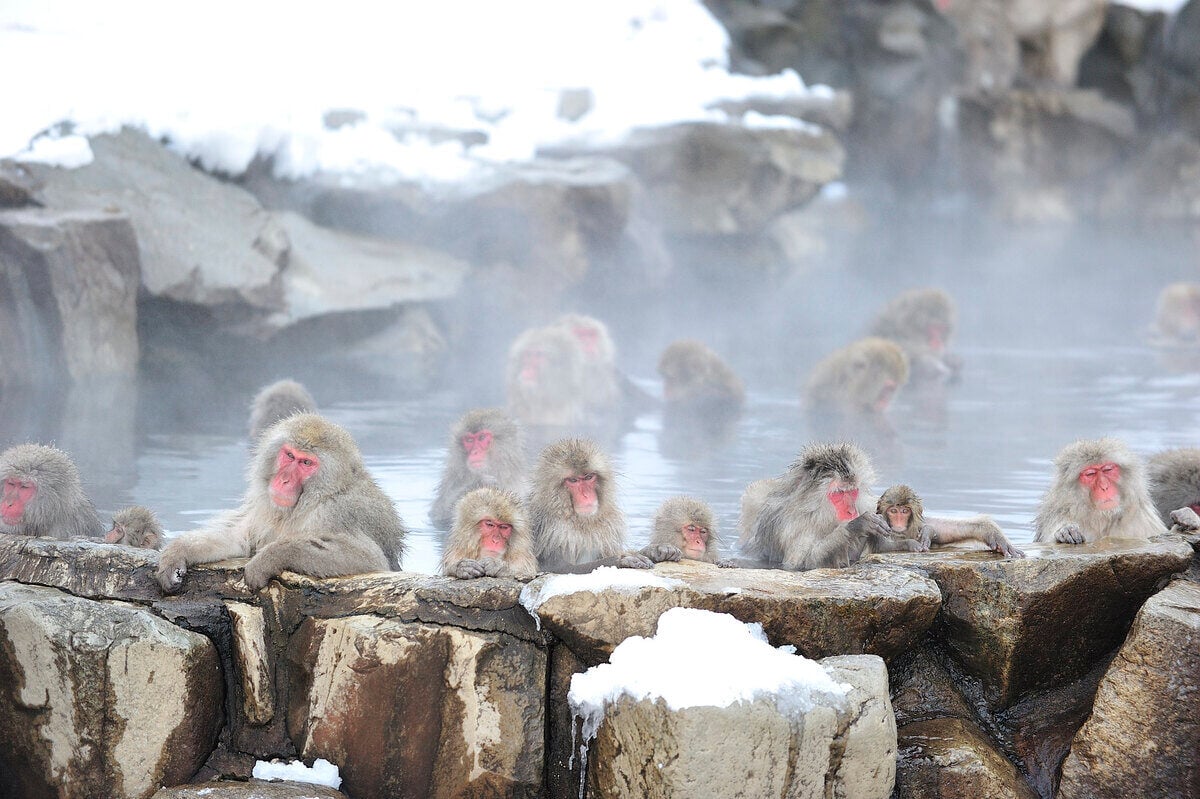
The Jigokudani Wild Snow Monkey Park, called Jigokudani Yaen-Koen in Japanese, was established in 1964 to create a space where the social structure of Japanese Macaques could be studied. Some say that the park was built after locals noticed the monkeys climbing into the hot spring of a nearby ryokan. No other nonhuman primate is known to live in such cold, snowy climates as the Japanese macaque, and soaking in the hot springs seems to be one way for them to endure the frigid weather.
Jigokudani’s resident troupe is made up of over 200 monkeys that call the mountains around the valley their home. They visit the park during the day to bathe in the springs and eat food provided by the staff of the park. The monkeys are given enough food to encourage their visits, but not so much to make them dependent on humans.
The park is located at the end of a 30 minute walk through a picturesque cedar forest from Kanbayashi, a convenient 45-minute bus ride from Nagano Station.
When to Visit
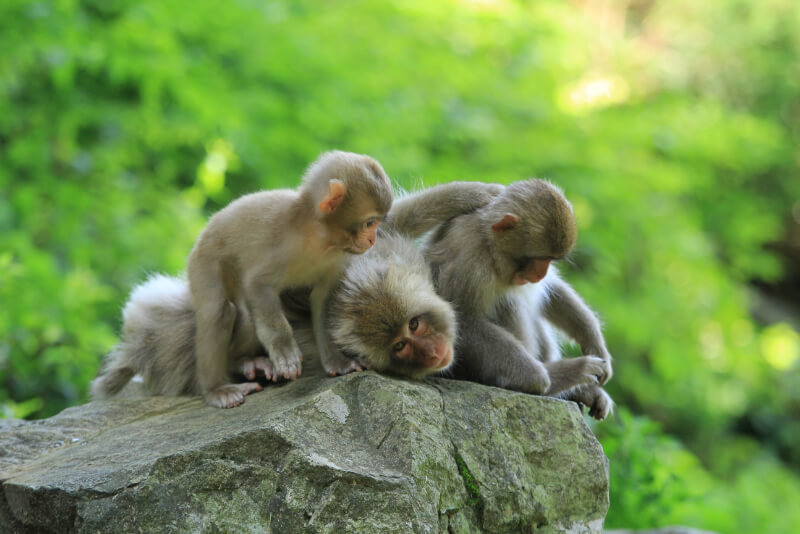

The snow monkeys in winter
Jigokudani Wild Snow Monkey Park is open year-round. During winter from December to March, snow covers the valley, and monkeys can often be seen soaking in the hot spring bath in the middle of the park. During the green season, usually from May to August, you can see newborn baby monkeys at play. In autumn from late October to early November, the forests around the park come alive with vibrant fall foliage; however, the monkeys may not visit the park as regularly as they do in other seasons.
The monkeys do not visit the park every day. Before heading to the park, check the park’s social media accounts for up-to-date information.
Location and Access
The park is located in the Jigokudani Valley behind the town of Yamanouchi. It is accessible by car and public transportation, but it at the end of 30-minute-long walking trail. The trail can be quite slippery during winter, so we recommend bringing winter boots and renting crampons and/or a walking stick at the trailhead.
The Snow Monkey 2-Day Pass
Those traveling by public transportation will want to purchase the Snow Monkey 2-Day Pass, which covers unlimited transportation for 2 days on the Nagaden train and buses between Nagano and Jigokudani as well as entrance to the park.
The pass can be purchased at the ticket window at Nagaden Nagano Station (Nagano Station B1F).
Price
Adults: 4,000 yen
Children: 2,000 yen
Access from Nagano Station is included below. See here for more detailed access information to the snow monkey park.
By Public Transportation
From Nagano City, there are two ways to reach the park. The easiest way is to take the Shigakogen line bus from the east exit of Nagano Station (45 min., 2,000 yen). From the Snow Monkey Park bus stop, you walk 35 minutes to the park.
You can also take the Nagano Dentetsu line train (B1F of Nagano Station) to Yudanaka Station (45 min., 1,590 yen), then take the local bus from there to the Snow Monkey Park stop (8 min., 390 yen).
By Car
The parking lot for Jigokudani is about 22 minutes (15km) away from the Shinshu Nakano IC exit of the Joshin-etsu Expressway. The lot is located next to the Enza Cafe (Tel: 0629-38-1736). During spring, summer and autumn, another closer parking lot is available (Tel: 0269-33-5733). Parking at this lot costs 500 yen.
Hours and Admission
The park is open throughout the year and has no regular closures. However, the park may close in the event of inclement weather or in case the monkeys do not show up the park for the day. For details, check the park’s official website and social media accounts.
Hours
Green Season (Apr. to Oct.): 8:30 to 17:00
Winter Season (Nov. to Mar.): 9:00 to 16:00
*Seasons are approximate
Admission Prices
Adults: 800 yen
Children: 400 yen
*See group prices on the park’s official website
Nearby Sightseeing
The Highlands of Shiga Kogen

The Manten View Terrace atop Mt. Yokote during summer

Hiking along the Ikemeguri trail

Autumn colors around Onuma Pond

Skiing in Shiga Kogen during winter
Rising above the town of Yamanouchi and Jigokudani, the highlands of Shiga Kogen reach altitudes of over 2,000 meters high. During winter, it is one of Japan’s largest ski resorts, offering skiing and snowboarding from late December to early May. For those who don’t ski or snowboard, there are also snowshoeing tours through its snow-covered plains and forests from January to early May.
In summer and autumn, Shiga Kogen has abundant trekking and hiking trails as well as picturesque terraces to enjoy the mountain views. One of Nagano’s best drive routes and the highest altitude national route in Japan, the Shiga–Kusatsu Route, runs through Shiga Kogen to connect the hot spring towns of Yamanouchi and Kusatsu Onsen.
Vivid autumn colors can be seen around Shiga Kogen from late September to mid-October.
Access
From the Snow Monkey Park bus stop, take the Shiga Kogen line bus to your stop of choice in Shiga Kogen (35 to 70 min.).
Ryuoo Sora Terrace

A sea of clouds beneath the Sora Terrace
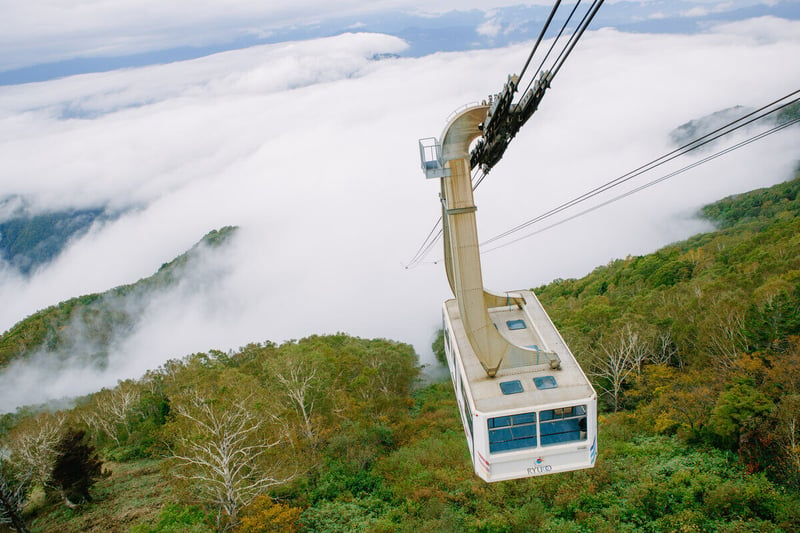
The Ryuoo Ropeway

Sunset views
Located at the top of Ryuoo Ski Park’s ropeway lift, the 1,770m Sora terrace has stunning views of the surrounding mountains, including Mt. Kosha and the Hokushin Gogaku (Mt. Iizuna, Kurohime, Togakushi, Madarao, and Myoko). When conditions are just right, clouds completely cover the valley below, becoming a vast sea interrupted only by rocky peaks. This phenomenon, called unkai in Japanese, can be seen regularly here—appearing on 63.5% of the days the terrace is open.
Access
From the Snow Monkey Park bus stop, take the bus to Yudanaka Station. From there, take the Ryuoo shuttle bus to Ryuoo Ski Resort. See shuttle bus timetables here (machine-translated).
The Charming Streets and Art Museums of Obuse
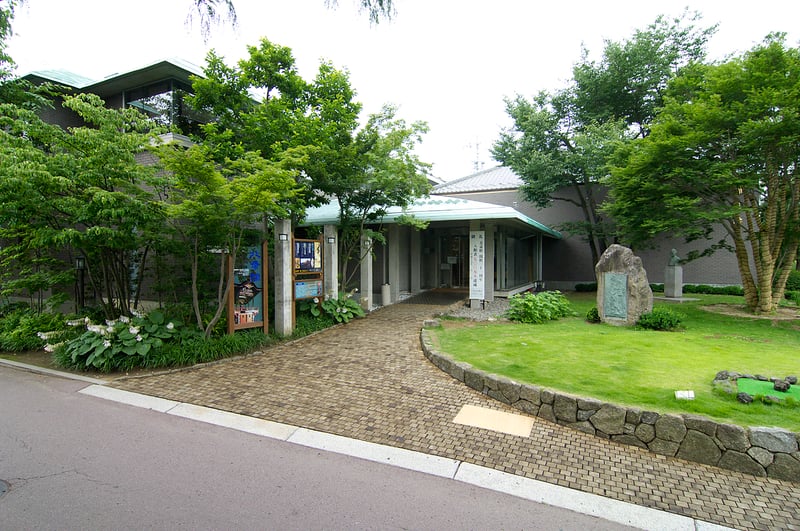
The Hokusai Museum

Obuse's chestnut street
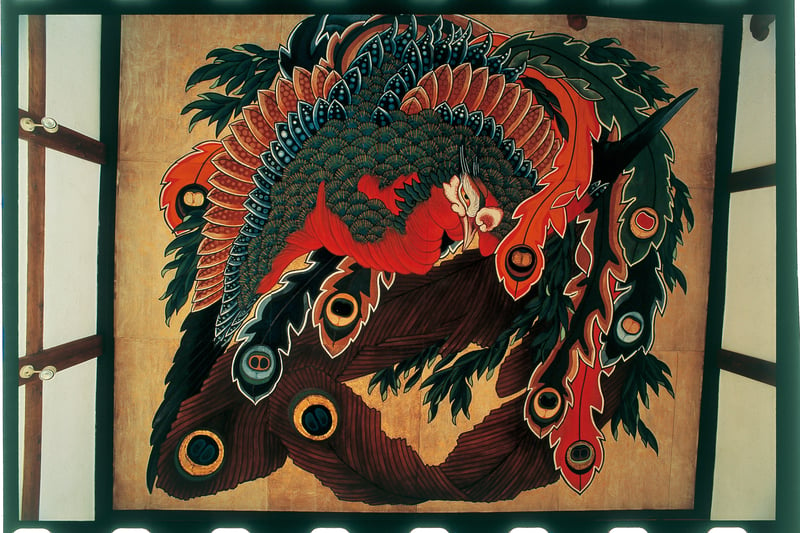
The “Happo Nirami Ho’oh-zu” at Gansho-in Temple
Located on the bank of the Chikuma River, the town of Obuse prospered in trade and agriculture. It is surrounded by chestnut fields, apple orchards and rice paddies, and brimming with earthen-walled storehouses, chic cafes and restaurants.
Some of Obuse’s most popular sights include the Hokusai Museum and Gansho-in Temple. The artist Katsushika Hokusai, known for his work “the Great Wave off Kanagawa,” spent many years in Obuse during his later years, and the Hokusai Museum was built in his honor. Gansho-in Temple features one of his largest and most vibrant works, the “Happo Nirami Ho’oh-zu.”
Access
From the Snow Monkey Park bus stop, take the local bus line to Yudanaka Station (15 min.). Then, take the Nagaden train to Obuse Station (25 to 45 min.).
Nagano City, Zenkoji Temple and Togakushi
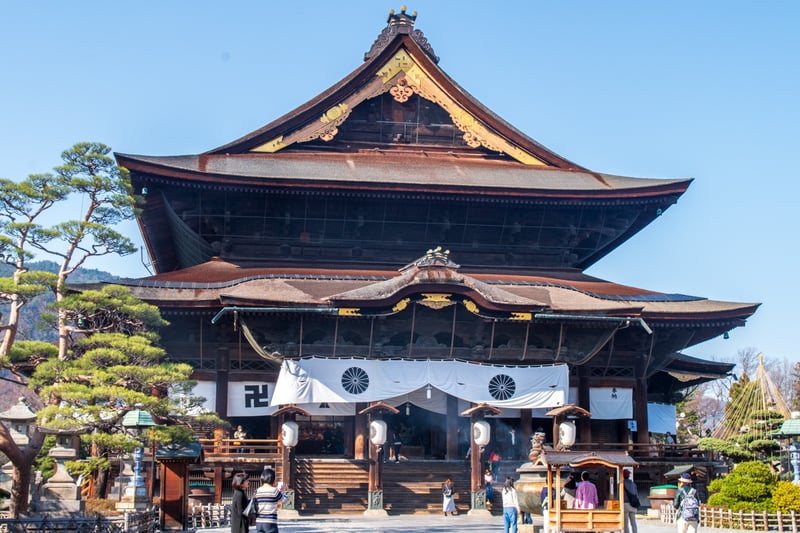
Zenkoji Temple
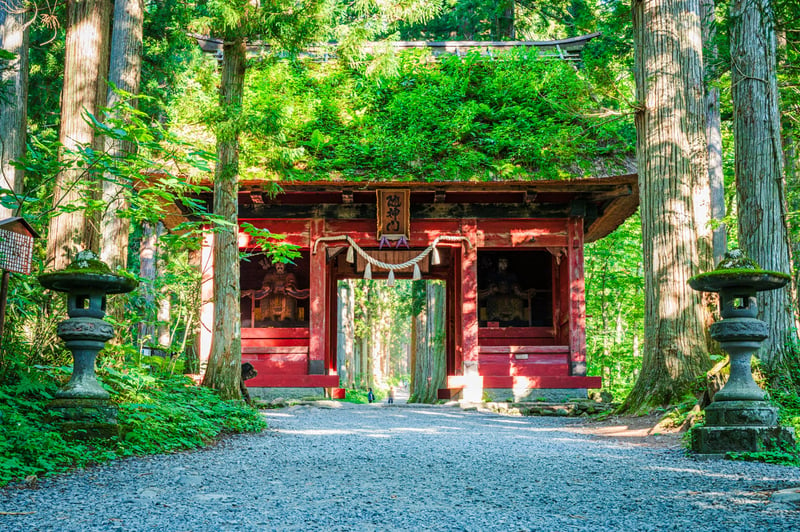
Zuishinmon Gate of Togakushi Shrine
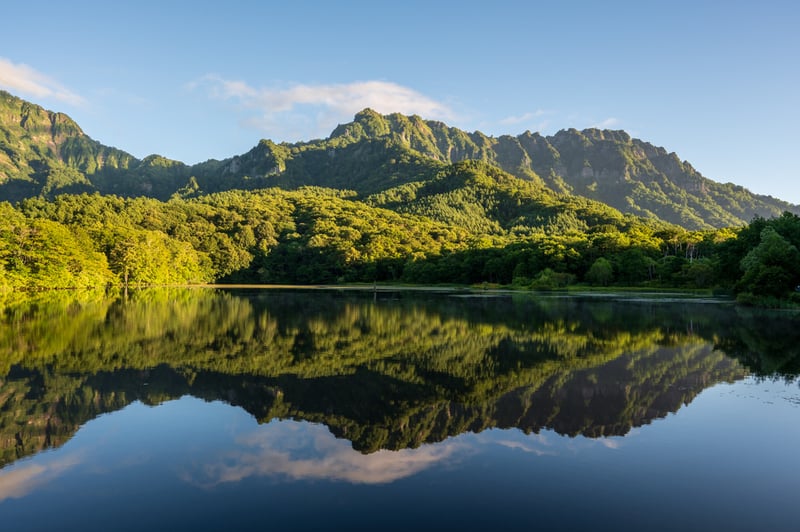
Kagami Pond in Togakushi

The Literary and Military Academy in Matsushiro
Nagano City is the gateway to Nagano Prefecture and the Jigokudani Wild Snow Monkey Park. Since you’ll be transiting through Nagano City anyway, why not visit some of its sites as well? Nagano City is home to venerable Zenkoji Temple, as well as the spiritual forests of Togakushi and the samurai town of Matsushiro.
Access
Zenkoji Temple is just a 20-minute walk or 10-minute bus from Nagano Station. Togakushi is 70 minutes by bus from Nagano Station. The town of Matsushiro is about 30 minutes away on the Matsushiro line bus.
Where to Stay
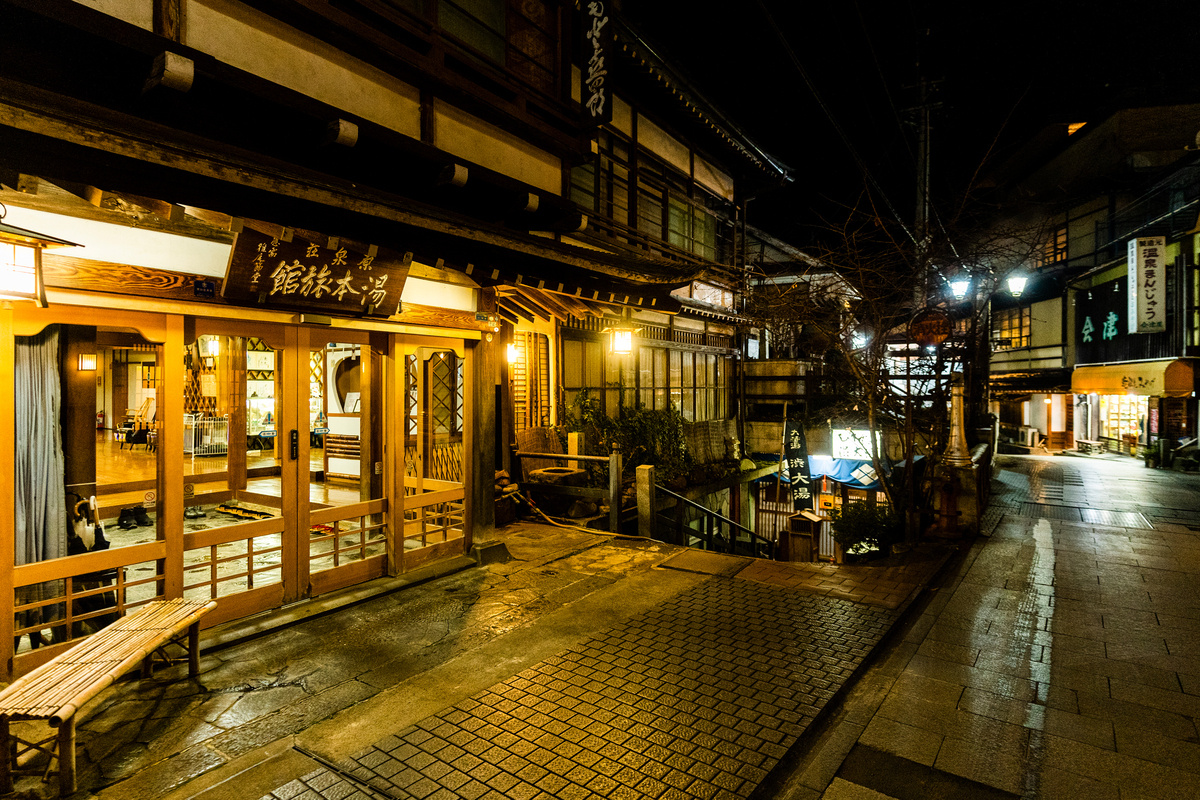
The Jigokudani Wild Monkey Park is located outside of the hot spring towns of Yamanouchi. After seeing the monkeys enjoy the warmth of a hot spring bath, head back to Yudanaka-Shibu Onsen and soak in the rejuvenating waters of one of its many bathhouses. If you stay in one of the hotels there, you can enjoy all nine public bathhouses around town while walking through cobblestone streets in yukata robes and geta sandals. The area has been a hot spring resort for hundreds of years and is filled with beautiful, multi-story wooden ryokan. One of them is even considered an inspiration for the bathhouse in Ghibli’s “Spirited Away.”

